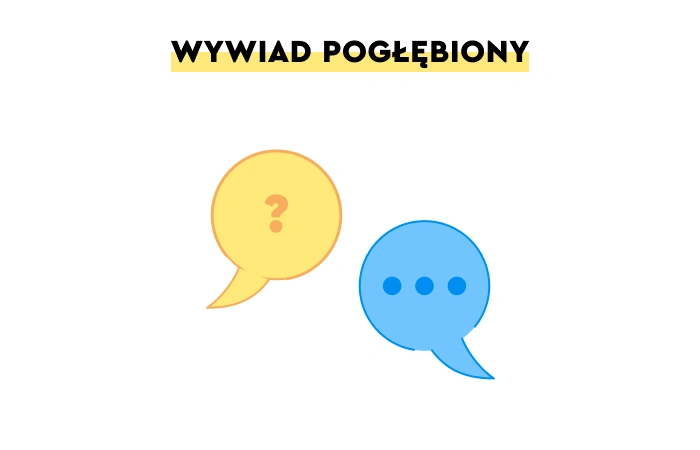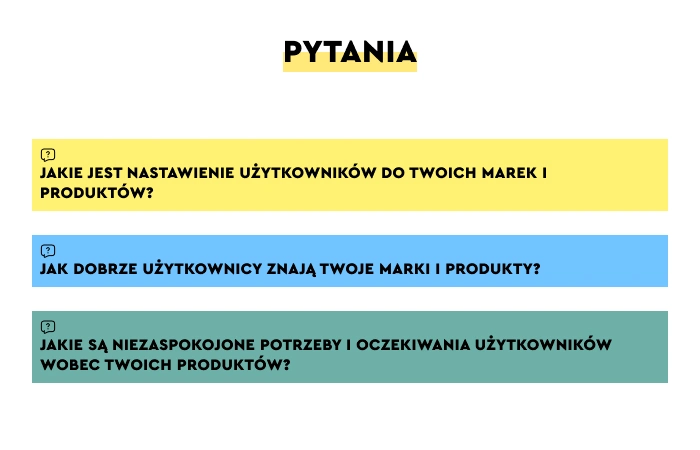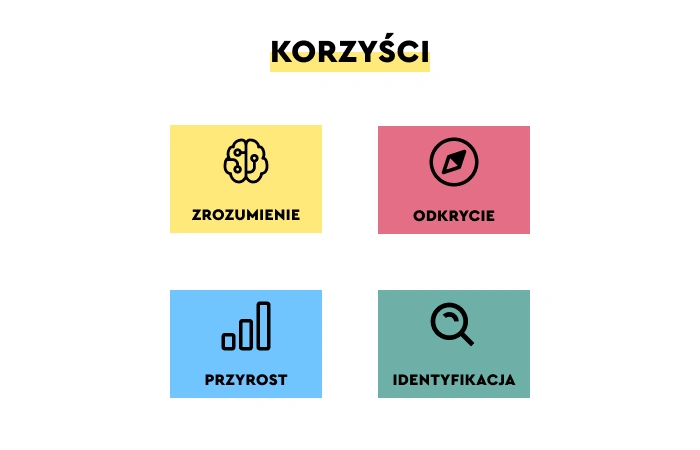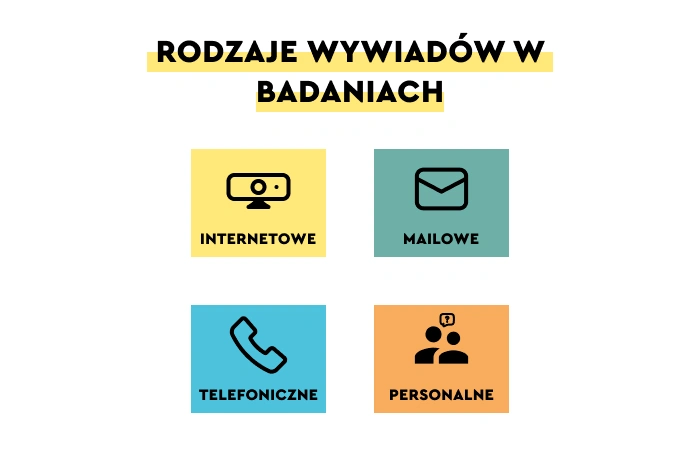IDI research method, IDI interviews, and In-Depth Interviews are terms that come up repeatedly in UX research.
The IDI interview, IDI study is one of the most popular research methods and a qualitative data collection method used to probe the needs that a digital product fulfills (e.g., website, mobile application).
In-Depth Interviews are often conducted with target users of a digital product and are used very early in the design process.
We can use them already at the stage of creation, and development of the product concept, thus providing it with adequacy and compliance with the needs of its future users.
Individual In-Depth Interviews aren't a method that was created with the development of UX research, but they've been developed as a research method based on social research (e.g., psychology, sociology).
What it means is that the methodology for conducting them is very academic.
As a result, Individual In-Depth interviews provide reliable and credible results that can, and do, provide a valuable source of knowledge.
IDIs also supply arguments used in making design and business decisions.
What are Individual In-Depth Interviews? What are the characteristics of this research method?
What rules should we follow when interviewing future website or mobile app users?
What is the scope of applicability of Individual In-Depth Interviews?
So if you are looking for condensed knowledge about this very popular, beneficial research method, we invite you to read our article, from which you will learn everything that's necessary.
We cordially invite you to read it!
What is an In-Depth Interview?
According to Tomasz Konecki's definition published in his book "Studia z metodologii badań jakościowych" (Studies in Qualitative Research Methodology), an In-Depth Interview is defined as a qualitative research method in which the interviewer freely:
- Structures a sequence of questions
- Formulates questions
- Adjusts the language of communication to the respondent.
Usually, a researcher who conducts Individual In-Depth Interviews (IDIs) aims to gain information that has been listed and defined before performing the research. In-Depth Interviews also belong to the wide array of market research activities.

It's about information that, from the researcher's point of view, is relevant, crucial, and necessary in the design process of a digital product in its optimization and development.
The information we want to acquire through this research method allows us to get a deeper, more reliable, more insightful, and compelling understanding of the problem under study.
An important aspect of Individual In-Depth Interviews is the freedom mentioned above, the ability to respond flexibly to information that emerges during the interview.
During the study, the researcher can change the order of questions, or their form, to respond to changing circumstances, new issues, problems, and information.
It's also worth emphasizing, which is a significant ethical addition to the above, that freedom also means appropriately adjusting the style and the terminology used for the respondent.
An IDI is a face-to-face interview, a conversation of equals in which each participant is equally essential.
The findings of an interview, the depth of an issue explored, opinions, and decisions depend on how it's conducted and on the motivation of a researcher and a respondent.
The researcher's language should sound as natural as possible, even colloquial. Formal language should be avoided, and each time it should be adapted to the nature of the interaction and a dialogue with a given respondent.
IDI is usually a method carried out one-on-one.
One UX researcher speaks directly, via instant messaging, or through a phone call to one respondent.
Thanks to this formula, Individual In-Depth Interviews guarantee:
- The comfort of the respondents
- Increased sense of security
- "Intimacy," privacy allows respondents to reveal their reactions, emotions, attitudes, opinions, and evaluations more confidently.
What is equally important, the IDI research scenario may also involve observing unconscious, automatic reactions (e.g., facial expressions, body language), which constitute complementary data.
Individual In-Depth Interviews are often treated as initial, exploratory research, making it possible to gain an early idea of the problem and organize knowledge, information, and hypotheses.

The researcher's curiosity plays an essential role in this method, the ability to adapt flexibly to the respondent, probe answers, delve deeper into an issue, and explore familiar and new threads.
IDIs cover an extensive range of topics and can address almost any issue related to usability, preferences, needs, habits, experiences, feelings, and motivations of future digital product users.
The purpose of this study, carried out by this method, is usually to focus on a product, situation, or goal.
Among the most popular, typical issues, topics discussed during an In-Depth Interview are:
- User motivation
- User goals
- Way of usage
- Context of product use
- Problems that arise from interaction with a digital product, its functionalities, and its interface
- The ethnographic and demographic information that influence the way the product is used.
In addition, the IDI research allows us to:
- Get feedback from a user, which is especially important when a digital product is being developed or optimized for usability
- Increase awareness of needs and expectations
- Discover previously unknown use cases.
IDI interviews can be conducted in three variants:
- A structured formula, in which a researcher asks in a reasonably methodical manner previously prepared questions
- An unstructured formula, in which a researcher doesn't refer to a previously prepared question during an interview
- A semi-structured formula, in which a researcher refers to previously prepared questions but flexibly deepens their knowledge during an interview with the help of questions formulated ad hoc as a form of reaction to the obtained information.
It's important to remember that the researcher must have a disposition for conducting In-Depth Interviews.
What are dispositions in an In-Depth Interview? It's a list in which a researcher determines the information they need.
Dispositions for an In-Depth Interview should be general enough not to restrict the course of an interview and specific enough not to make it feel haphazard.
What do Individual In-Depth Interviews consist of?
Usually, IDIs require a group of respondents. Depending on budget capacity, time pressure, the research problem's complexity, and researchers' goals, it can range from a dozen to as many as several dozen people.

How long does an In-Depth Interview take? There is no single correct answer to this question.
Nevertheless, it's estimated that an individual interview with a single respondent usually lasts from thirty to sixty minutes.
A short interview may not provide an opportunity to gather all the answers and information you are looking for; in turn, an extended interview may result in the weariness of a respondent, who will start to give short and incomplete answers.
Of course, researchers aim to extract as much helpful information as possible, but it's worth remembering that respondents can't feel pressure.
Instead, they should be drawn into a conversation that also should be attractive to them.
In addition, during the interview, researchers should exhibit an appropriate level of:
- Flexibility
- Empathy
- Candidness
- Impartiality – they can't judge, criticize, or comment on statements of a respondent
- Patience – the pace and the way of giving answers should be determined by a respondent
- Attentiveness and inquisitiveness – especially regarding nuanced verbal and body language messages
- Curiosity – they should listen to a respondent actively and respectfully.
The interview, that's a form of dialogue, should be based on open-ended questions, without hidden suggestions or evaluations.
In addition, questions should be as neutral as possible, without suggesting "desired" answers.
Factual, specific, unambiguous, and understandable questions constitute the heart of Individual In-Depth Interviews.
Just like questions, in which respondents are asked to give examples, justify their statements, and explain their feelings, evaluations, and attitudes.
Investigating the reasons, causes, conditions, necessity, rules, and repeatability also significantly improves the quality of information obtained during the interview.

It's also crucial to gain and maintain the trust of a respondent during the interview.
The symmetry of the relationship – researcher/respondent – is crucial to gaining trust.
A respondent mustn't feel interrogated or in any way dominated by a researcher.
The role of a researcher is to take the respondent's perspective as accurately and empathetically as possible, allowing them to understand the respondent's problems.
Establishing an understanding with respondents during the Individual In-Depth Interview makes it possible to obtain essential information.
The main advantages of In-Depth Interviews include:
- Insight into how users of a digital product think and react
- Diversity of collected data
- Lack of influence of a group on a respondent's answers, which is the case, for example, in focus group research
- Increased authenticity of a study compared, for example, to an online survey, which can be perceived as emotionless, overly technical, and boring
- Ability to respond to information and deepen knowledge.
The success of a study carried out by this method also depends on the ability to formulate questions, which should be constantly developed and trained.
We can find a helpful technique for formulating questions in the book by Brad Nunnally and David Farkas, "UX Research: Practical Techniques for Designing Better Products."
The authors suggest that each question should begin with a clear statement of its purpose, which should be made clear in the introduction to the question.
The structure of such purpose should answer the questions:
- What? - Through which we can make a description
- Why? - Through which we can make an explanation
- How? - Through which we can define a process
- When? - Through which we can define a situation
- Where? - Through which we can define the context.
The introduction has a vital function because it allows the respondent to understand what kind of response is expected from them and how they should formulate the answer regarding its length, depth, and scope.
The next element of a question, after the introduction, is its subject, i.e., the clue of the question, which allows for obtaining valuable information from the researcher's point of view.
Although the researcher (most likely) will have already prepared initial questions and/or follow-up questions, they shouldn't be too suggestive and should enable the respondent to guide the conversation.
While hearing the respondent's answer, the semantic ladder method is worth keeping in mind, which allows to deepen the question and provoke an in-depth narrative, mainly by means of a repeated question – why?
How to write a study scenario for an In-Depth Interview?
The freedom mentioned above cannot be synonymous with randomness, improvisation, or chaos.
That's not the approach that Individual In-Depth Interviews are about.
Every UX study, including IDI, must be well-thought-out and planned, and we can achieve this with a study scenario's help.
A UX Research scenario is nothing more than a plan which should outline the following:
- Nature of a project – primarily, what product we're studying and what goals this product allows users to achieve
- Research objectives – what information, what questions we are looking to answer, what data is necessary for the design and decision-making process, what assumptions we have, and what hypotheses we put forward
- Respondents – in terms of a research scope, respondents' characteristics, attributes, experiences, and preferences
- Recruitment process – in which we will determine the method, channel, gratification, and any logistical and organizational problems
- Research method and research tools – in terms of defining necessary elements of a study procedure and equipment that will be used throughout its course (e.g., recording equipment)
- Risks – any problems that may arise in a project and a single study.
In the case of Individual In-Depth Interviews, the scenario and its questions provide a general framework. It supplies general guidance to a researcher.
It's intended to support UX research and improve its course, but it's not a collection of questions that researchers must methodically ask the respondent.

A scenario for a researcher also serves as a reminder.
Lets them remember about:
- Properly familiarizing a respondent with a purpose and scope of a study
- Informing them about the way of aggregation and use of data, information, and opinions
- The need to obtain information within the established time frame.
An important aspect is the conduct of a study itself, which should be carried out in accordance with the general framework within which:
- Researcher introduces themselves to a respondent and establishes with them a short, initiating, relaxing conversation on general topics (Small Talk)
- Thanks them for taking part in the study
- Informs about the purpose and the reason for a study, as well as defines its scope
- Informs about the length of a study
- Informs about the methods of data usage
- Obtains approval for the registration of a study
- Informs about the method of gratification.
The answer to the question of how an In-Depth Interview ends is also standard.
Every study should end with a summary of the collected information and a question about whether a respondent has anything else to add.
The UX study should conclude by expressing gratitude for the time and energy spent and indicating the usefulness of the acquired knowledge and information.
The goal is to reinforce in a respondent the feeling that the conversation, their involvement, time, and information served a specific purpose. And are valuable both in a general sense (for future users of the product) and in a particular one.
When creating a scenario and questions for IDIs, it's also necessary to keep in mind the limitations of this method, which the authors associated with the Interaction Design Foundation very aptly described in the article "How to Conduct User Interviews."
They include among the main drawbacks of IDI:
- Incompatibility of declarations with real user behavior – which is most accurately summarized by Jakob Nielsen's first rule of usability – Don't Listen to Users
- Confusion of roles – the role of respondents isn't to design a digital product; it's to evaluate it, to react; this is easily forgotten
- Time-consuming nature of In-Depth Interviews
- High costs that don't always correspond to the knowledge gained through IDIs
- Difficulty in recruiting participants who constitute a representative group
- High dependence of the results on the knowledge, experience, and commitment of a researcher.
Additionally, this type of interview requires more extensive planning and more resources compared to other data collection methods. However, if we keep the above information and guidelines in mind, this method will provide us with valuable insights that are worth the effort.
Individual In-Depth Interviews (IDI). Summary
- An Individual In-depth Interview is a qualitative research technique used in User Experience research and market research.
- IDIs are used to probe the needs fulfilled by a digital product.
- Studies of an exploratory nature provide arguments used in making design and business decisions.
- Usually, the purpose of IDI research is to develop and obtain information that experts and UX researchers have defined before the start of a study.
- The information we want to obtain should allow us to understand the problem under study.
- IDI is usually a method carried out one-on-one. - Interviewer vs. Respondent.
- The scenario of the IDI study can also involve observation and analysis of unconscious, automatic reactions.
- The researcher's curiosity, the ability to flexibly adapt to the respondent, probe answers, delve deeper into the issue and explore familiar and new threads are essential skills of a researcher conducting a study.
- The goal of an IDI is often to focus on a product, situation, or objective. IDI research is a form of a deeper understanding of an issue.
- IDIs can be conducted in structured, unstructured, and semi-structured formats.
- Factual, specific, unambiguous, and understandable questions formulated by a researcher constitute the heart of Individual In-Depth Interviews.
- IDIs must be conducted with the help of a study scenario, in which the recruitment of participants should also be outlined.
- One of the main advantages of In-Depth Interviews is the increased authenticity of a study compared to, e.g., online surveys.
- The main disadvantage of Individual In-Depth Interviews is the incompatibility of the declarations with the real behavior of users.






